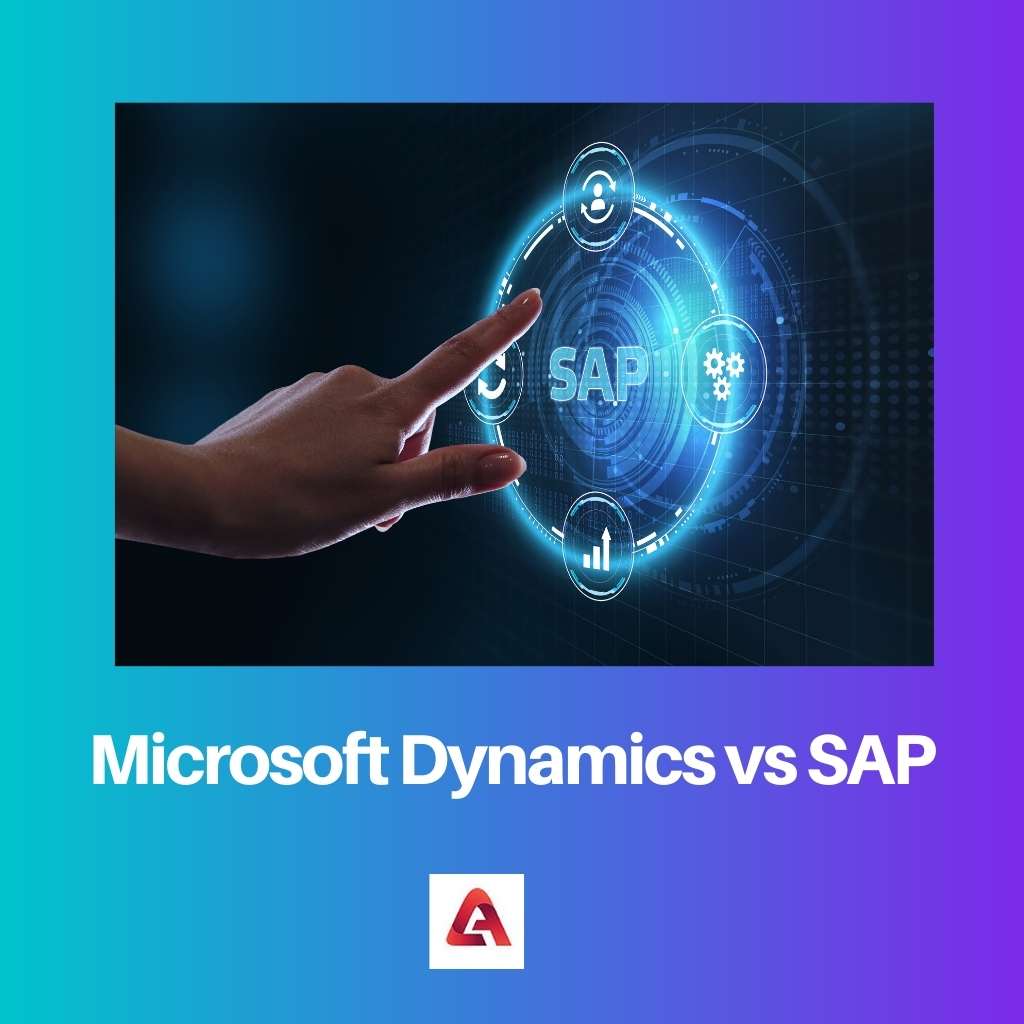ERP or Enterprise Resource Planning, is an essential management software for any business enterprise. It automates daily tasks and helps in decision-making.
It can manage data and streamline processes. Under the domain of ERP, there is two most common software that is widely used. They are – Microsoft Dynamics and SAP.
Key Takeaways
- Microsoft Dynamics offers a range of business solutions, including ERP, CRM, and BI, while SAP primarily focuses on ERP systems.
- Dynamics is known for its user-friendly interface and seamless integration with other Microsoft products, whereas SAP is praised for its robustness and scalability.
- The choice between Microsoft Dynamics and SAP depends on company size, budget, and specific business requirements.
Microsoft Dynamics vs SAP
Microsoft Dynamics is a suite of ERP and customer relationship management (CRM) software solutions offered by Microsoft. It includes products such as Dynamics 365 for Finance and Operations. SAP is an ERP software solution developed by the German company SAP SE. It provides various products, including SAP S/4HANA, SAP Business One, and SAP ECC.

Microsoft Dynamics is a part of ERP (Enterprise Resource Planning) and CRM (Customer Relationship Management). It was launched in the year 2016.
The operating system of Microsoft Dynamics is Microsoft Windows. Integration of 3rd party applications is limited but can integrate effectively with Microsoft apps.
On the other hand, SAP is developed as enterprise software to improve customer relations and manage business operations. SAP can effectively integrate with various 3rd party applications,, including Non-Microsoft products.
It offers customization as well as the flexibility to the users.
Comparison Table
| Parameters of Comparison | Microsoft Dynamics | SAP |
|---|---|---|
| User-interface | Easy and simple | Integration of 3rd party applications is limited but can integrate effectively with Microsoft apps. |
| Type of features | Microsoft Dynamics has flexible features | SAP has standardized features |
| Third-party integration | Provide a wide range of features, flexibility, customization, numerous language support, multiple currencies, and multilingual. | Can effectively integrate with various 3rd party applications |
| Advantages | SAP is ideal for large enterprises as it provides standardized features, all core functionality of ERP are provided with customization, BI features like data storage, intuitive dashboard and report writing are provided | The user interface is web-based, which can cause hindrance in businesses operating with poor infrastructure |
| Disadvantages | It takes longer to gain mastery and control over SAP, the user interface is slightly complicated and not enough engaging, and has no flexibility in the features | It takes longer to gain mastery and control over SAP, the user interface is slightly complicated and not engaging enough, and has no flexibility in the features. |
What is Microsoft Dynamics?
Microsoft Dynamics is a part of ERP (enterprise resource planning) and CRM (Customer relationship management). The marketing of dynamics by Microsoft is done through a network of partners who are resellers of specialized services.
Microsoft Dynamic is also a part of Microsoft business solutions. It can be used in other services like Yammer, SharePoint, Outlook, Office 365, and Azure.
The operating system of Microsoft Dynamics is Microsoft Windows. The license type provided is proprietary software. The products of Microsoft Dynamics are Dynamics in NAV, Dynamics GP, Dynamics SL, and Dynamics AX.
The main aim of Microsoft Dynamics is to help different segments of the market, that could be small or medium-sized to even large organizations.
Other new suites have been added to Microsoft Dynamics, which are Microsoft Dynamics 365 for Finance and Operation, Microsoft Dynamics 365 Customer Service, Microsoft Dynamics 365 Business Central, and others.
Microsoft Dynamics also does the sale of the “share step” as an implementation methodology for the resellers. Dynamix 365 AI was also launched in 2018 for sales applications.
Microsoft Dynamics provides various related products also.
Some examples of related sets of the product are Microsoft Dynamic Management Reporter, Microsoft Dynamics for Marketing, Microsoft Dynamics for Retail, Microsoft Dynamics Social Listening, Power Automatic Desktop, Microsoft Flow, and other customer engagement software in service channels and customer support.
What is SAP?
SAP is multinational German software cooperation. It is developed as enterprise software to improve customer relations and manage business operations. It is based in Walldorf.
The speciality of the company is ERP software. It was founded in the year 1972 in Germany. All core functionalities and features of ERP are provided with customization.
The CEO of SAP is Christian Klein. SAP has a service-oriented architecture implementation. The creation of SAP is on the benefits of web services and is mainly enabled by the SAP NetWeaver platform.
The various enterprise’s SAP solutions provide are mySAP SRM, mySAP CRM, and mySAP ERP.
The pricing model of SAP is quote-based. However, it provides cheaper options for larger organizations. A larger organization would require standard features and no additional add-ons.
The plans do not have much flexibility and customization. However, it can integrate new measures with the existing systems.
All the system features, and upgrades are built in-house in SAP. Since all the features are standardized, implementation and integration do not take much time and are covered within a shorter period.
Almost all 3rd party applications can be easily integrated without switching. But the user interface is complicated, and it can take time for users to understand every feature and function.
Main Differences Between Microsoft Dynamics and SAP
- Microsoft Dynamics is more intuitive, while SAP is less intuitive.
- Microsoft Dynamics has a web-based UI, while SAP has a complicated UI.
- Microsoft Dynamics does not provide email support in customer service, while SAP provides email support in customer service.
- Microsoft Dynamics has dedicated training for life support over the phone or online and for different modules, while SAP has no dedicated training for customer service.
- Microsoft Dynamics cannot integrate every non-Microsoft product, while SAP can integrate every non-Microsoft product easily.



